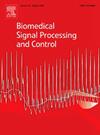基于序贯预处理和迁移学习的糖尿病视网膜病变精准深度学习新模型
IF 4.9
2区 医学
Q1 ENGINEERING, BIOMEDICAL
引用次数: 0
摘要
本研究考虑使用深度学习来检测糖尿病视网膜病变(DR)。DR影响着全世界80%的糖尿病患者,是致盲的第二大原因。许多研究表明,早期诊断和治疗对预防疾病进展至关重要。本研究的贡献在于开发了准确的DR检测算法和相应的模型,其中通过高效的处理管道将出血带到了更明显的形式。为了处理有限的DR数据资源,并使眼睛出血的可见性更加明显,我们通过将数据增强、预处理、迁移学习和兼容CNN的自适应相结合,开发了一个高效的深度学习模型。使用的数据集包括个体眼底图像,将其分为dr的五个阶段,为了评估,对该模型进行了全面的消融研究。接下来,根据最先进的算法对开发的模型进行评估,并在关键指标中展示有希望的结果。特别是,该模型的准确率为96.95%,并引入了低于1%的假阴性率。该研究的有效指标最大限度地减少了漏诊的风险,降低了糖尿病患者严重视力丧失的可能性。因此,我们的模型有潜力为临床患者护理做出贡献。本文章由计算机程序翻译,如有差异,请以英文原文为准。

New accurate deep learning model for Diabetic Retinopathy detection utilizing sequential pre-processing and transfer learning
This study considers the detection of Diabetic Retinopathy (DR) using deep learning. DR affects 80% of diabetic patients worldwide and is the second leading cause of blindness. Many studies have shown that early diagnosis and treatment are critical to prevent disease progression. The contribution of this study is the development of an accurate DR detection algorithm and corresponding model, where hemorrhages were brought to a more apparent form by an efficient processing pipeline. To handle limited DR data resources and to make the visibility of bleeding in the eye more apparent, we have developed an efficient deep learning model by combining data augmentation, pre-processing, transfer learning, and adaptation of a compatible CNN. The employed dataset comprises fundus images of individuals, which are categorized into five stages of DR. For evaluation, comprehensive ablation studies are conducted on the model. Next, the developed model is evaluated against state-of-the-art algorithms and demonstrates promising results in key metrics. Particularly, the model yields 96.95% accuracy and introduces a false negative rate below 1%. Efficient metrics of the study minimize the risk of missed diagnoses and reduce the likelihood of severe vision loss in diabetic patients. Therefore, our model has the potential to contribute to clinical patient care.
求助全文
通过发布文献求助,成功后即可免费获取论文全文。
去求助
来源期刊

Biomedical Signal Processing and Control
工程技术-工程:生物医学
CiteScore
9.80
自引率
13.70%
发文量
822
审稿时长
4 months
期刊介绍:
Biomedical Signal Processing and Control aims to provide a cross-disciplinary international forum for the interchange of information on research in the measurement and analysis of signals and images in clinical medicine and the biological sciences. Emphasis is placed on contributions dealing with the practical, applications-led research on the use of methods and devices in clinical diagnosis, patient monitoring and management.
Biomedical Signal Processing and Control reflects the main areas in which these methods are being used and developed at the interface of both engineering and clinical science. The scope of the journal is defined to include relevant review papers, technical notes, short communications and letters. Tutorial papers and special issues will also be published.
 求助内容:
求助内容: 应助结果提醒方式:
应助结果提醒方式:


